Excavator Tree Stumper VS Stump Puller
When tackling land clearing projects, removing tree stumps efficiently can make or break your operation's productivity. The choice between an excavator tree stumper and a stump puller significantly impacts project timelines, costs, and environmental considerations. For professionals in railway construction, mining, demolition, forestry, and land management, understanding these differences is crucial for equipment selection. Tree stumpers, attached to standard excavators, leverage powerful hydraulic systems to grind stumps into mulch, offering versatility across various terrains. Meanwhile, stump pullers extract entire root systems intact, leaving substantial holes but removing the complete stump. This fundamental difference drives their respective applications across industries. The optimal choice depends on your specific project requirements, soil conditions, stump size, and environmental considerations. By evaluating these factors alongside your existing equipment fleet, you'll make an informed decision that enhances operational efficiency while controlling costs—a critical consideration for purchasing managers and engineers alike.
Working Principles and Mechanisms
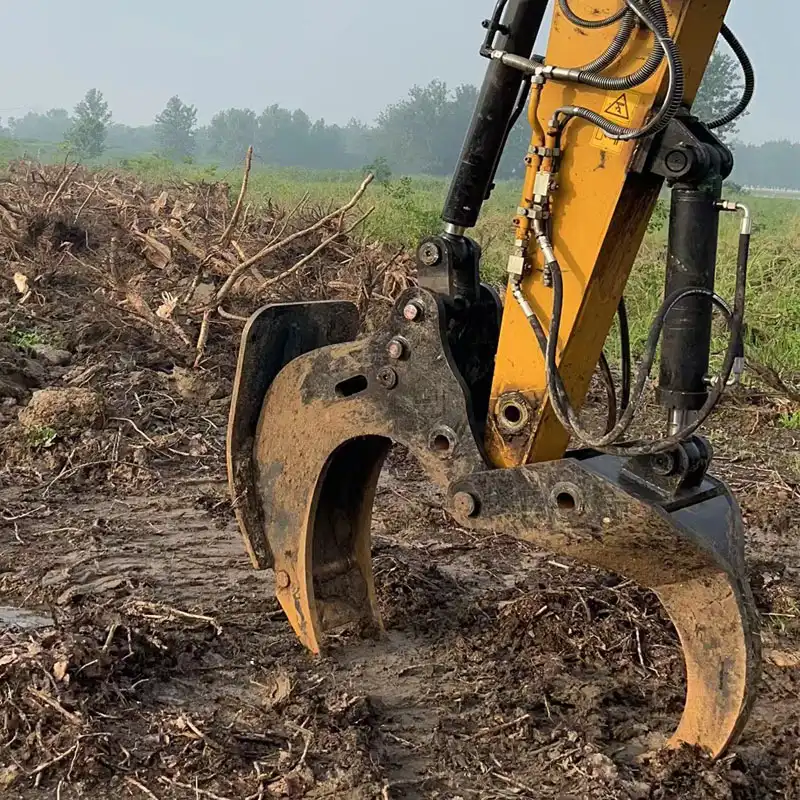
Excavator Tree Stumpers Function
The excavator tree stumper represents a remarkable evolution in land-clearing technology. These powerful attachments transform standard excavators into specialized stump removal machines without requiring additional heavy equipment investments. The core mechanism features a rotating drum equipped with carbide teeth or blades that spin at high velocities when activated. When the operator positions the attachment over a stump, these teeth efficiently chip away the wood above and below ground level.
Modern excavator tree stump attachments utilize advanced hydraulic systems that harness the excavator's existing power source. This hydraulic integration delivers impressive torque to the cutting head, allowing it to process hardwood stumps that would challenge lesser equipment. The operator maintains precise control through the excavator's cabin controls, adjusting depth, angle, and pressure according to stump conditions.
The grinding process typically begins at the stump's center before gradually working outward in a systematic pattern. This methodical approach prevents damage to the attachment while ensuring complete reduction of the stump material. Most designs incorporate protective shields that contain flying debris, enhancing operator safety and preventing damage to surrounding structures or equipment.
Stump Puller Design and Operation
Stump pullers employ a fundamentally different approach to removal. Rather than grinding the stump into mulch, these devices extract the entire stump with its root system intact. The basic design consists of a powerful clamping mechanism that grips the stump securely, coupled with hydraulic cylinders that generate tremendous vertical lifting force.
Most commercial stump pullers attach to excavators, skid steers, or dedicated vehicles. The operation begins with positioning the puller over the stump, then engaging the gripping mechanism to establish a firm hold. Once secured, the hydraulic system applies upward force, gradually loosening the root system from surrounding soil. This process often requires rocking motions or multiple attempts at different angles to break the root network's grip on the earth.
Advanced stump pullers feature articulating arms that provide operators with better leverage against particularly stubborn stumps. Some designs incorporate vibration mechanisms that help loosen compacted soil around roots, facilitating cleaner extraction. The entire process focuses on removing the complete stump-root structure as a single unit.
Key Mechanical Differences
The mechanical distinctions between these technologies directly influence their suitability for various applications. Excavator tree stumpers utilize rotational force and cutting action, creating a controlled demolition process that converts solid wood into manageable mulch. This approach minimizes ground disturbance while effectively eliminating the stump.
Stump pullers, conversely, rely on tremendous pulling force to overcome the natural anchoring provided by root systems. This method causes significant soil disruption, creating holes that may require additional filling and compaction work afterward. However, it ensures complete removal of the entire root structure, preventing any possibility of regrowth.
From an engineering perspective, excavator tree stumpers place greater emphasis on cutting technology and material processing, while stump pullers focus on structural strength and hydraulic lifting power. These fundamental differences explain why excavator operators might prefer one solution over the other depending on project requirements.
Efficiency and Applicability
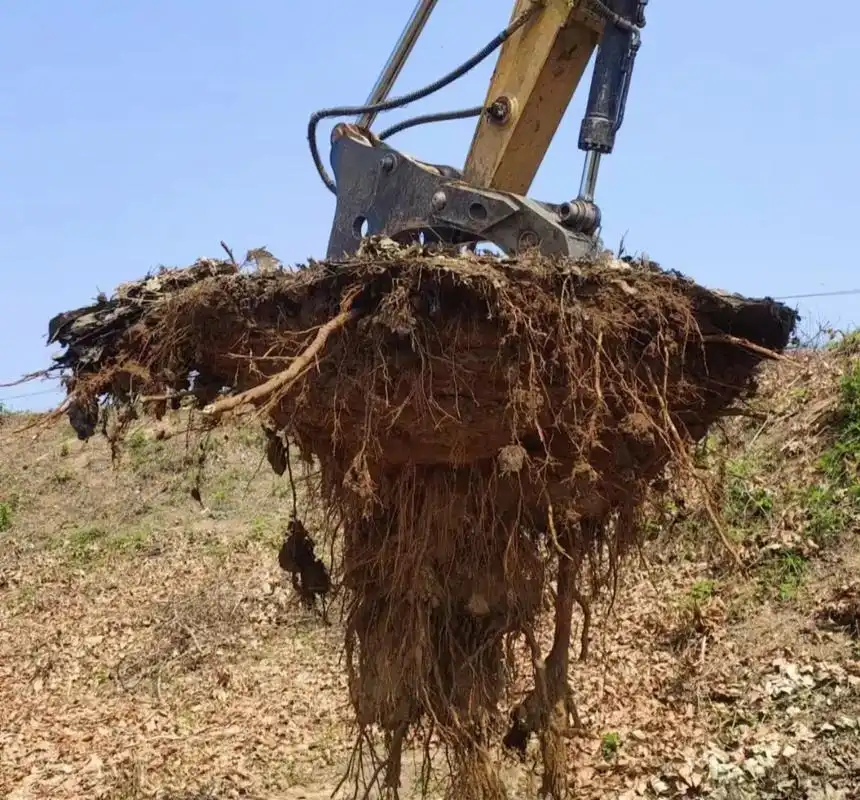
Performance Metrics and Time Considerations
When evaluating excavator tree stumper performance against stump pullers, several metrics deserve attention. Processing time varies significantly between the technologies based on stump size, wood hardness, and root complexity. On average, an excavator tree stumper completely processes a medium-sized stump (30-40 cm diameter) in approximately 15-30 minutes, converting it entirely to mulch. This consistent processing time remains relatively stable across different stump sizes, though larger stumps naturally require more time.
Stump pullers demonstrate different efficiency patterns. Smaller stumps with less extensive root systems might be extracted in just 5-10 minutes, potentially outpacing grinding methods. However, performance diminishes dramatically with larger stumps or those with extensive root networks, sometimes requiring 45+ minutes of manipulation to achieve complete extraction.
Fuel efficiency considerations also favor excavator tree stumpers in many scenarios. The grinding process maintains a consistent power demand that modern excavators handle efficiently. Stump pulling creates variable load spikes that can increase overall fuel consumption, particularly when dealing with resistant stumps that require multiple extraction attempts.
Industry-Specific Applications
Different industries benefit from these technologies in unique ways. Railway construction and maintenance operations frequently prefer excavator tree stumpers when clearing rights-of-way. The controlled grinding process creates minimal ground disturbance, preserving soil stability—crucial for areas adjacent to tracks. Additionally, the processed mulch can be left in place to prevent erosion, an important consideration for railway embankments.
Construction and demolition companies typically evaluate accessibility concerns. In confined urban spaces where bringing in specialized equipment proves challenging, an excavator tree stumper attachment offers versatility. The same excavator used for other site preparation work can quickly transition to stump removal duties without mobilizing additional machinery.
Forestry and land management operations often consider long-term site plans. Properties slated for replanting benefit from stump pullers that completely remove old root systems, eliminating potential obstacles for new growth. Conversely, land being converted to agricultural use might prefer the excavator tree stumper's ability to process stumps below plow depth while leaving the soil structure largely intact.
Terrain and Environmental Factors
Site conditions significantly influence equipment selection. The excavator tree stumper excels on challenging terrain where stability concerns limit options. Because the excavator remains stationary during operation, it can safely work on slopes or uneven ground that might compromise other equipment. Additionally, tracked excavators distribute ground pressure effectively, minimizing soil compaction in sensitive areas.
Stump pullers require sufficient operational space around the target stump and solid footing to generate the necessary extraction force. Their effectiveness diminishes in waterlogged or exceptionally rocky soils where roots intertwine with subsurface obstacles. However, they perform exceptionally well in sandy soils where root extraction occurs more easily.
Environmental considerations increasingly influence equipment choices. Excavator tree stumpers generate biodegradable mulch that decomposes naturally, returning nutrients to the soil. This elimination of removal and disposal costs appeals to environmentally conscious operations and projects with tight budget constraints. Stump pullers create disposal challenges, as extracted stumps require transportation to processing facilities or dedicated grinding operations—adding logistical complications and expenses.
Practical Considerations
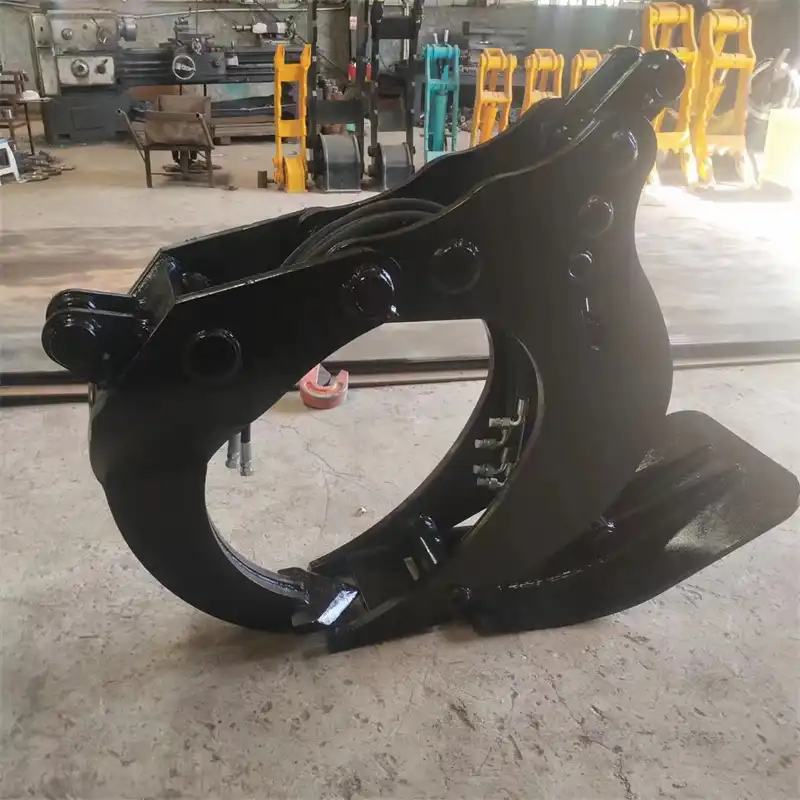
Maintenance and Operational Requirements
Long-term reliability depends on proper maintenance protocols. Excavator tree stumpers demand attention to cutting components, with regular inspection for damaged or worn teeth. Most operators establish routine replacement schedules based on operating hours or material processed. The rotating mechanism requires regular lubrication and inspection of bearings to ensure optimal performance.
Hydraulic system maintenance becomes critical for both technologies, but especially crucial for stump pullers. The extreme forces involved in extraction place tremendous pressure on hydraulic cylinders, valves, and hoses. Regular fluid analysis helps identify contamination issues before they cause catastrophic failures. Seal inspection becomes particularly important given the constant tension and compression cycles during operation.
Operator training requirements differ between the technologies. Excavator tree stumper operation focuses on proper positioning and movement patterns to maximize efficiency while minimizing wear on cutting components. Stump puller operation requires greater skill in assessing root structures and determining optimal grip points—knowledge that develops through experience and significantly influences productivity.
FAQ
①What size excavator is needed for a tree stumper?
Most tree stumpers work effectively with machines in the 5-20 ton range, with Tiannuo's model operating optimally at 6250 kg.
②Can excavator tree stumpers work below ground level?
Yes, quality excavator tree stumpers typically process stumps 10-15 inches below grade, eliminating regrowth concerns.
③How do maintenance costs compare between these technologies?
Excavator tree stumpers require periodic cutting tooth replacement, while stump pullers need more frequent hydraulic system maintenance due to extreme operational stresses.
④Are there environmental advantages to either option?
Excavator tree stumpers create biodegradable mulch that benefits soil health, eliminating disposal requirements that stump pullers typically generate.
About Tiannuo
When comparing a tree stumper versus a stump puller, each technology offers distinct advantages for specific applications. The tree stumper excels in scenarios requiring minimal ground disturbance, consistent processing times, and on-site material management. Its ability to convert stumps to beneficial mulch while working in challenging terrain makes it particularly valuable for railway maintenance, construction sites, and environmentally sensitive projects.
Stump pullers offer compelling benefits for operations prioritizing complete root removal, particularly in projects where preventing future subsidence issues or preparing land for new plantings takes precedence. Their generally lower initial cost appeals to organizations with limited capital budgets, though this advantage may diminish when considering total operational expenses.
For professionals in construction, demolition, forestry, and land management, the choice ultimately depends on specific project requirements, existing equipment fleets, and long-term site plans. By carefully evaluating these factors alongside operational constraints, decision-makers can select the technology that maximizes productivity while meeting budgetary requirements.
Tiannuo Construction Machinery specializes in high-quality excavator attachments, including advanced excavator tree stumpers designed for optimal performance across diverse applications. With specifications including a maximum digging height of 6700 mm, a maximum unloading height of 5000 mm, and a bucket capacity of 0.27 m³, these attachments integrate seamlessly with existing excavator fleets. For more information about selecting the right stump removal solution for your specific needs, contact us at rich@stnd-machinery.com.
References
Journal of Construction Engineering and Management, "Comparative Analysis of Stump Removal Technologies in Land Development Projects," 2023.
Forestry Equipment Technical Review, "Advancements in Hydraulic Stump Processing Attachments," 2024.
International Railway Maintenance Standards Association, "Best Practices for Vegetation Management in Railway Corridors," 2023.
Construction Productivity Management Review, "Equipment Selection Optimization for Land Clearing Operations," 2024.
Environmental Impact Assessment in Construction Practices, "Sustainable Approaches to Vegetation Removal and Processing," 2023.
About Author: Arm
Arm is a leading expert in the field of specialized construction and railway maintenance equipment, working at Tiannuo Company.
YOU MAY LIKE
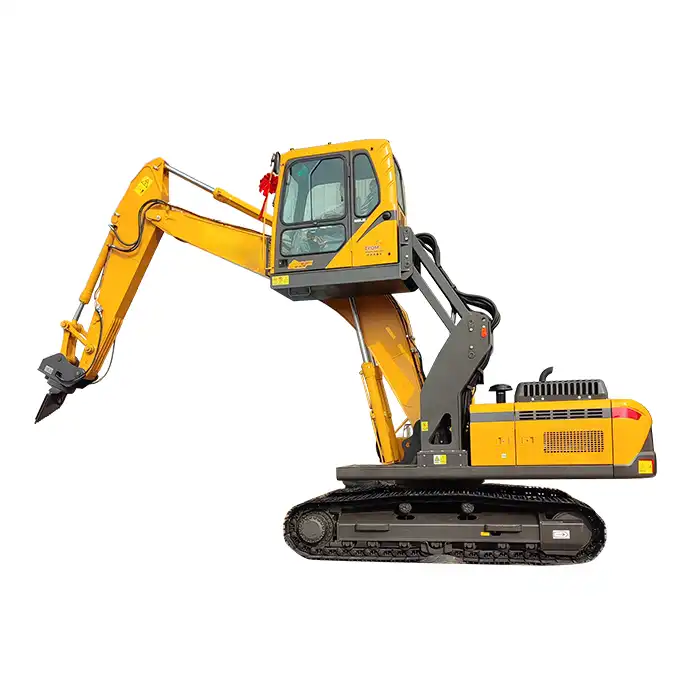 VIEW MOREExcavator Lift Cab
VIEW MOREExcavator Lift Cab_1756791633631.webp) VIEW MOREExcavator Three Section Demolition Boom
VIEW MOREExcavator Three Section Demolition Boom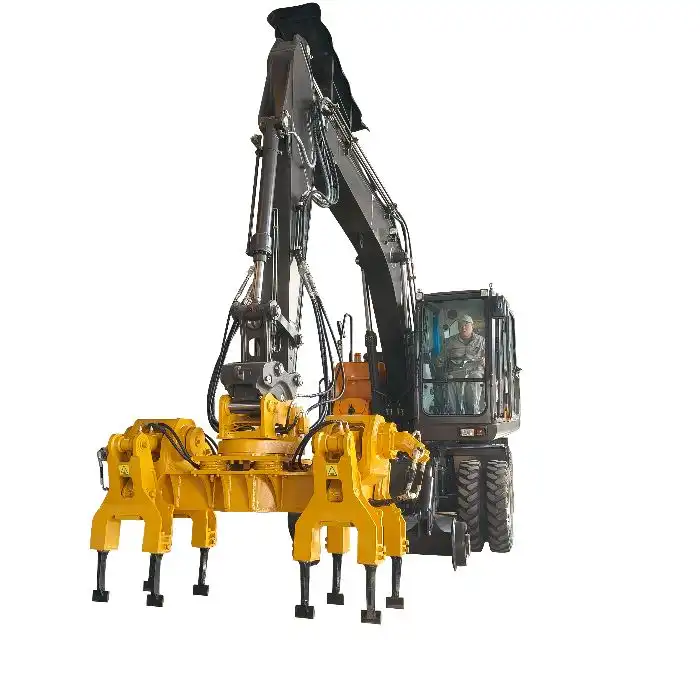 VIEW MORErailway double-head tamper
VIEW MORErailway double-head tamper (1)_1759821044914.webp) VIEW MORERailroad Excavator Concrete Sleeper Grab
VIEW MORERailroad Excavator Concrete Sleeper Grab_1758183275256.webp) VIEW MORELong Reach Boom for Hitachi Excavator
VIEW MORELong Reach Boom for Hitachi Excavator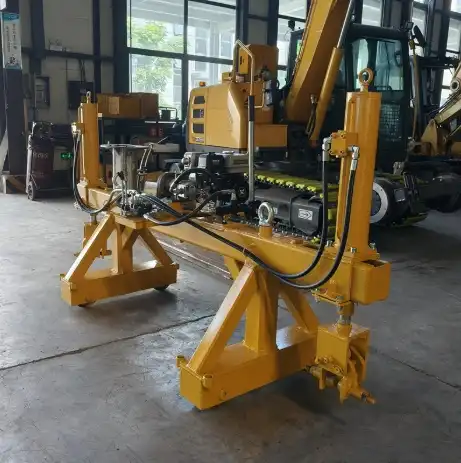 VIEW MOREGantry (goat) crane for rail change
VIEW MOREGantry (goat) crane for rail change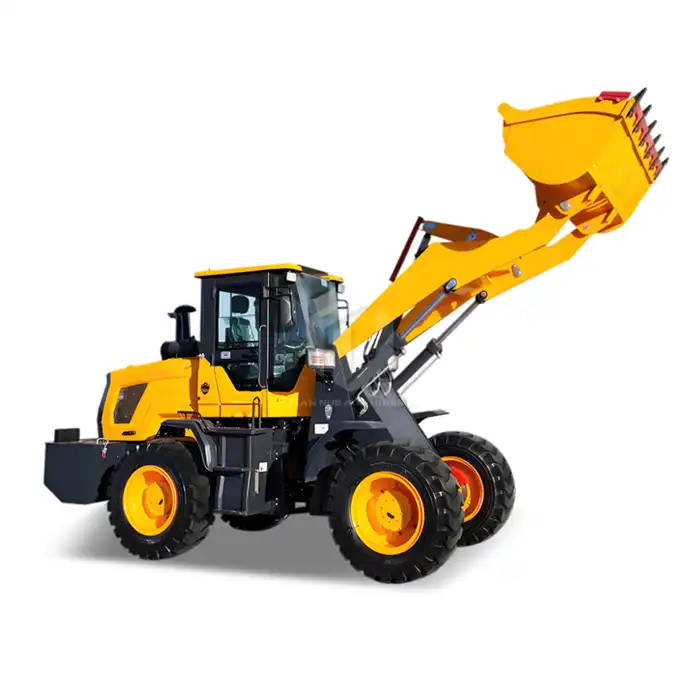 VIEW MORELoader Arm Extensions
VIEW MORELoader Arm Extensions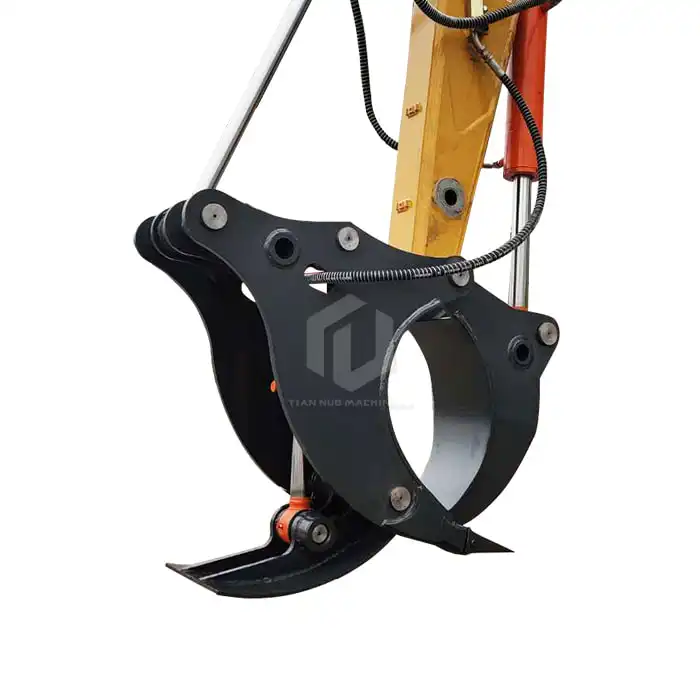 VIEW MOREExcavator Tree Stumper
VIEW MOREExcavator Tree Stumper

